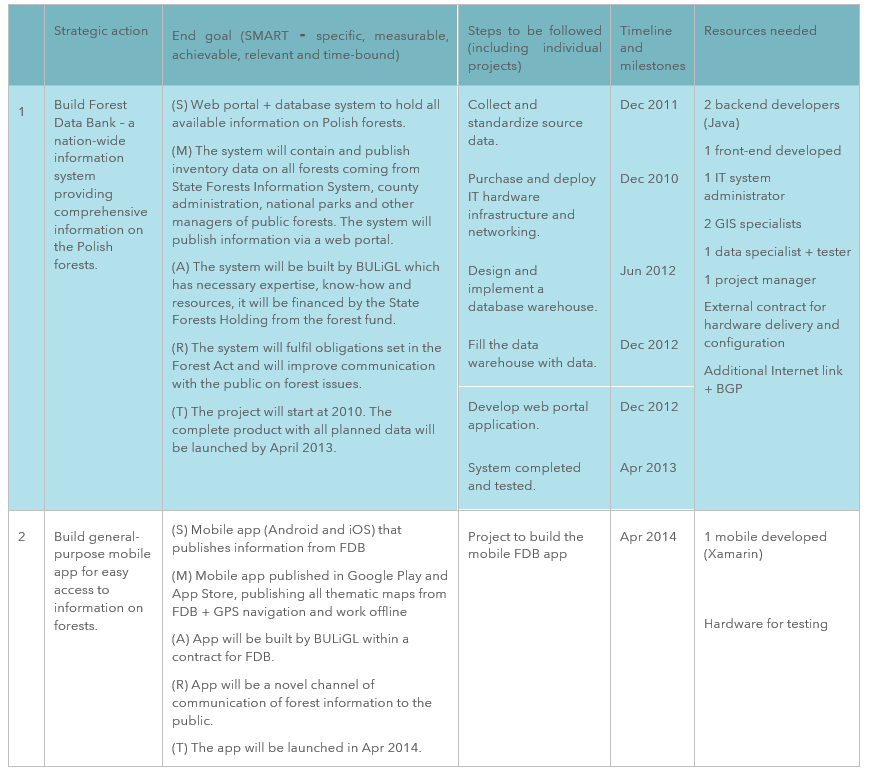Phase 3: IT strategic planning
Identify strategic actions
Objective of the exercise
The objective of this exercise is to prepare a strategic action plan for implementing a forest information system by considering key factors such as stakeholder needs, partnerships and technological infrastructure.
Introduction
Why do we need to identify strategic actions?
The previous exercises increased the understanding of stakeholders and institutions in the forest sector by mapping their relationships and dependencies. A value chain analysis (VCA) was carried out, which provided the foundation for identifying business-related objectives that should precede the FIS development. They were translated into IT-related objectives. Available critical IT resources were assessed, and necessary points of intervention were identified to properly support the IT-related objectives. Finally, principal KPIs designed to monitor alignment of FIS development results to the objectives were formulated.
In the next step, specific strategic actions should be defined. They should lead to the elimination or at the least reduction of the gaps identified. Likewise, efficiency and quality of processes in the forest sector should be improved to support the overall objectives. These strategic actions will be the framework for the individual projects.
How should strategic actions be identified?
There is no one-fit-for-all approach as the local context, priorities and resources must be considered. One possible method is to begin with designing information systems around the forest management strategy, stemming from existing forest policy, the institutional landscape, organizational and financial capabilities and administrative capacity.
Identifying strategic actions for implementing a FIS involves careful consideration of key factors that contribute to its successful establishment and operation. After a successful stakeholder analysis and the mapping of institutions, understanding the specific requirements and priorities of various stakeholders is essential to formulating a strategic action plan that addresses their diverse needs effectively.
Establishing strong partnerships and collaboration with relevant stakeholders is vital for engaging with experts from the forest sector, academia, technology providers, as well as political actors, to foster a shared vision and encourage knowledge exchange. This can be done by involving different stakeholders in the planning process at an early stage to create a joint strategic action plan.
Ensuring the availability and accessibility of appropriate technology infrastructure is crucial. This involves evaluating existing technological capabilities, addressing potential limitations and implementing upgrades or new solutions as needed.
Step 1. List strategic actions
This also involves only 1 step. Use all the materials prepared at earlier steps of this methodological framework to identify strategic actions to be undertaken. This process should be done with the involvement of decision makers from policy, business and IT areas. There are many possible ways to create a strategic action plan. It could be a simple text document outlining the steps and projects necessary to achieve the strategic goals. It is often beneficial to use a structured template, as it may help to include all necessary information. The degree of detail of such a template depends on the level of analysis. High-level strategic action plans are generally less detailed as their role is to outline only necessary actions. Low-level operational action plans are usually more detailed because they are later translated into specific projects with well-defined outcomes.
Figure below presents an example of a strategic action plan to achieve a strategic business object to improve the provision of forest-related information to the public in Poland. It is provided as a general example only, as each action plan may have a different level of detail and most probably different goals and associated business objectives.
